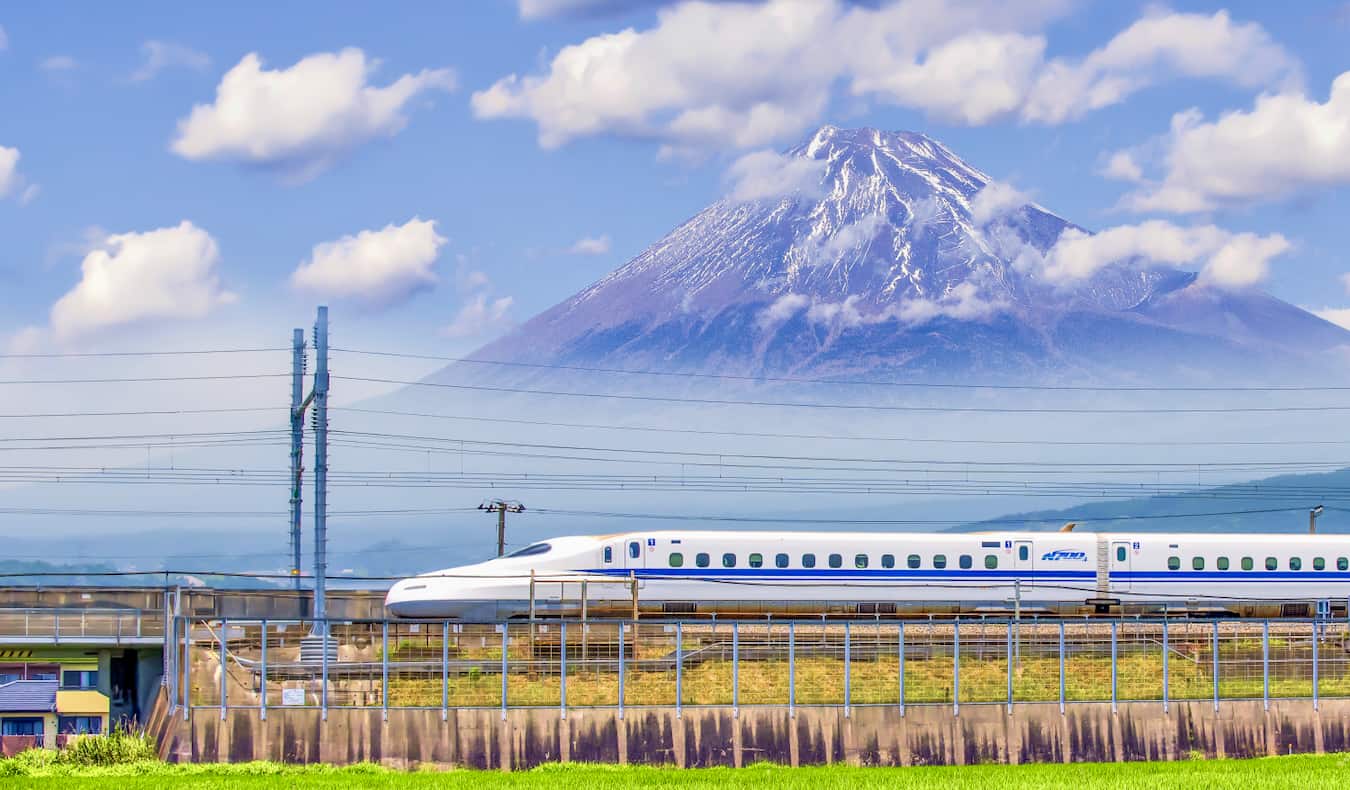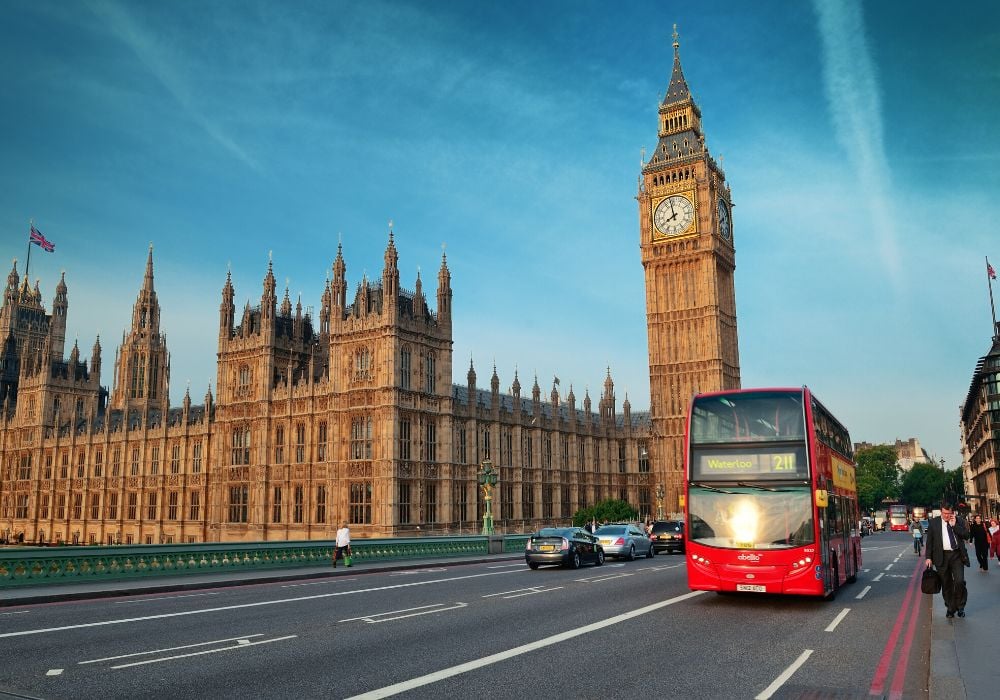

Posted: 1/9/23 | January 9th, 2023
Japan is one of my favorite countries in the world. The serene beauty of the mountains and temples, the hustle and bustle of the sprawling cities, the exquisite food, and its long history make for a fascinating place to visit.
However, Japan has a reputation, especially among budget travelers, as being too expensive. “Better skip Japan and head to Southeast Asia, where your money goes further,” they say.
Yet you can travel Japan on a budget. Food, attractions, and even accommodation (it’s the land of capsule hotels!) can be found for a relatively low cost if you know where you look.
Yet one aspect of traveling in Japan that does live up to its costly reputation is transportation — particularly train travel.
Japan’s iconic bullet trains (called shinkansen) are beautiful, comfortable, convenient, and fast. They are world-class wonders of transportation, racing around at speeds up to 320 kilometers (200 miles) per hour. They run on special tracks separate from the other trains and are an impressive feat of engineering.
They’re super expensive. There’s just no way around that fact.
Thankfully, there is one easy thing you can do to cut your train ticket prices in half (or more): buy a Japan Rail Pass. You really shouldn’t be traveling around the country without one (and I’m pretty sure they price the pass and regular tickets out in a way that really forces you to buy one).
In this post, I’ll introduce the JR Pass and explain how it works, how much it costs, and answer common questions I get about the pass.
What is the Japan Rail (JR) Pass?
The Japan Rail Pass (also known as the JR Pass) was created to help travelers get around the country (similar to the Eurail pass in Europe). JR is the largest train operator in Japan, and the pass provides unlimited access to all its trains for a set price.
The pass comes in 7-, 14-, and 21-day options. Note that these are consecutive days, not travel days. So, if you want to travel around Japan for two weeks, you’ll need to purchase the 14-day option, even though you won’t be taking the train every day.
Several JR trains are included in the pass. The most popular is the shinkansen (bullet) train, which is the fastest train and goes to nearly every destination and region. The next fastest is the tokkyu (limited express). The kyuko (express) train comes next, followed by the kaisoku (rapid) and kakueki-teisha or futsu-densha (local trains that make every stop).
In short, this means that there are JR trains that rapidly travel between regions, some that go between cities with multiple stops, and local commuter-style trains that are slow (but cheap).
Additionally, JR trains also serve some metropolitan areas, so they can be used within cities. For example, on my last visit, I used my JR Pass to get around Kyoto and Tokyo instead of buying local metro tickets.
The JR Pass needs to be purchased before you arrive in Japan and it has to be mailed to you so you’ll want to order it well in advance (more below).
How the JR Pass works
The JR Pass is very easy to use — you just need to remember to purchase it beforehand, while in your home country, as the pass is only available to visitors. (While you can purchase it at select ticket offices in Japan until March 2023, in-person passes cost significantly more, so it’s better just to order it in advance).
The pass has several options (each valid for consecutive days, not just travel days):
- 7 days: 29,650 JPY (39,600 JPY for a Green Pass)
- 14 days: 47,250 JPY (64,120 JPY for a Green Pass)
- 21 days: 60,450 JPY (83,390 JPY for a Green Pass)
The Green Pass is the first-class option. Since the trains in Japan are already amazing, you likely don’t need to buy the Green Pass unless you really want some luxury. Additionally, traveling in green cars can be more of a hassle if you like to be spontaneous, as you must always reserve a seat in advance in green cars, requiring you to visit the ticket office or automatic reservation machines ahead of time to do so. In ordinary cars, you can just hop on and take any available seat.
In addition to the standard and green JR passes, there are regional passes in case you are not traveling across the entire country. These options can save you even more money since they are cheaper than the regular JR passes. Each region has several pass options, usually ranging between one and seven days.
You can buy JR passes for six regions:
- JR East (for the main island)
- JR West (for the main island)
- JR Central (for the main island)
- JR Hokkaido (for the northern island)
- JR Kyushu (for the southwestern island)
- JR Shikoku (for the southeastern island)
If you’re just going to be focusing on one region of the country, consider buying a JR regional pass. If you want access to the entire country, get the regular JR Pass.
If you’re a first-time visitor to Japan, you’ll likely want the regular JR Pass, as it covers all the major destinations.
In sum, to get a pass, you need to:
- Pick the time duration for your pass (7, 14, or 21 days)
- Choose your class (Green or standard — again, standard is more than sufficient for most travelers)
- Decide what geographical area you want to visit (all of the country or a single region)
- Pay the fee and order the pass before you leave home
Getting and using Your JR Pass
The easiest way to get a Japan Pass is by ordering it online (there are many official online providers but I recommend this one as it’s been selling passes for the longest time).
Once you purchase a pass, you’ll receive an “exchange order” in the mail, stamped with a date, that you’ll turn in to pick up your actual pass in Japan. Don’t forget your exchange order at home, as you must bring this document to pick up your pass in Japan!
Once you get to Japan, you will exchange your exchange order (hence the name) for a JR Pass at a JR office. Make sure you have your passport on you (not a photocopy) when you go to collect it, as they will check to make sure that you have a temporary visitor stamp in your passport. The JR Pass is only available to visitors and they are pretty strict about verifying you’re a tourist.
You have three months from the date printed on the exchange order to pick up your JR Pass, but you do not need to start using the pass on the same day that you pick it up.
For example, say that you want to pick up the pass once you arrive but you want to spend some time in Tokyo before heading on to see the rest of the country. You can select any date within one month of exchanging the order as your starting date. (But once the pass is issued, you can’t change the starting date.)
Once you’ve got your pass in hand, you don’t need to worry about getting tickets, as you simply use your pass to go right through the automatic turnstiles.
In addition to using the shinkansen and other trains, the JR pass gives access to:
- Local buses operated by JR (such as the tourist loop bus in Hiroshima or JR buses around Sapporo)
- Ferries operated by JR (such as the one from Hiroshima to the island of Miyajima)
- JR lines running through metropolitan areas (such as Tokyo and Osaka)
- Free seat reservations (otherwise, seat reservations cost around 330-930 JPY)
The JR Pass is not valid for:
- The Nozomi and the Mizuho shinkansen lines
- Japanese citizens or residents, such as foreigners working in Japan (only those with a tourist visa can use the pass)
Is the Japan Rail Pass worth it?
Absolutely! Even though you might get sticker shock initially when purchasing a pass, you’ll save hundreds of dollars during your trip with one — even if you just visit 2-3 cities. For example, without a rail pass, a ticket from Tokyo to Osaka costs around 27,000 JPY (round-trip), yet you can get a seven-day rail pass that includes unlimited travel on JR trains for just 29,650 JPY. So for the price of one round-trip ticket, you get unlimited travel. It’s a no-brainer!
Here are some more examples of one-way train tickets on the shinkansen trains with non-reserved seats in the “ordinary” (non-green car) class:
- Tokyo-Hiroshima: 18,380 JPY
- Tokyo-Kyoto: 13,320 JPY
- Tokyo Fukuoka: 23,390 JPY
- Kyoto-Hiroshima: 10,570 JPY
- Kyoto-Osaka: 4,230 JPY
- Hiroshima-Fukuoka: 9,000 JPY
- Nagano-Kanazawa: 8,440 JPY
- Tokyo-Yokohama: 3,210 JPY
- Hakodate-Tokyo: 23,500 JPY
As you can see, it only takes one longer-distance journey from Tokyo (such as to Hiroshima or Fukuoka) to justify the cost of the pass. And you’ll likely use it much more than that!
And even if you aren’t taking the bullet trains, the pass still makes sense. For example, a trip on a local train from Kyoto to Tokyo costs around 8,360 JPY — instead of 13,320 JPY for the bullet train. However, the local train journey takes nine hours and requires several transfers, instead of a direct three hours, making it a less than ideal choice for most travelers (especially if you’re tight on time). It’s often simply not worth the cost savings.
You’re better off using the bullet trains and reveling in the high-speed experience as it whisks you from one incredible destination to another!
Japan Rail Pass Frequently Asked Questions
Is JR Pass only for tourists?
Yes. Only people visiting on a tourist visa can use the JR Pass.
Can Japan Rail Pass be used on the Tokyo subway?
Yep, some of the subway lines (though not all) in Tokyo are run by JR, which means you can access them for free with your JR Pass. This is true for the entire country. Metro lines and local subway lines are excluded from the pass.
Can I change the days on which I wish to use the Japan Rail Pass?
No. Once the pass has been activated, the dates are set in stone.
How do I activate the Japan Rail Pass?
To activate the JR Pass, bring your exchange order and your passport to a JR office in Japan. Once they verify your identity and visa status, they will activate your pass.
Can I use JR Pass from Tokyo to Kyoto?
Yep! The distance is 445 kilometers (283 miles), and the trip takes under three hours on the bullet train.
Are buses included in JR Pass?
Yes, JR does run some bus lines, which are included in the JR Pass. Some destinations where JR has buses include Hokkaido, Shikoku, and Kyushu.
Can I cancel my Japan Rail Pass?
You can cancel your pass as long as it has not been activated, but once it is activated, you can’t.
Train travel is the best way to see Japan. The trains are clean, fast, and the scenery gorgeous. I love traveling the country by train. While buying a rail pass might seem like a costly choice, it will save you a ton of money — and it’s a uniquely Japanese experience that you won’t forget!
Book Your Trip to Japan: Logistical Tips and Tricks
Book Your Flight
Use Skyscanner to find a cheap flight. They are my favorite search engine because they search websites and airlines around the globe so you always know no stone is left unturned!
Book Your Accommodation
You can book your hostel with Hostelworld as they have the biggest inventory and best deals. If you want to stay somewhere other than a hostel, use Booking.com as they consistently return the cheapest rates for guesthouses and cheap hotels. My favorite places to stay in Japan are:
Don’t Forget Travel Insurance
Travel insurance will protect you against illness, injury, theft, and cancellations. It’s comprehensive protection in case anything goes wrong. I never go on a trip without it as I’ve had to use it many times in the past. My favorite companies that offer the best service and value are:
Looking for the Best Companies to Save Money With?
Check out my resource page for the best companies to use when you travel. I list all the ones I use to save money when I’m on the road. They will save you money when you travel too.
Be sure to check out the Japan Rail Pass if you’ll be traveling around the country. It comes in 7-, 14-, and 21-day passes and can save you a ton of money!
Want More Information on Japan
Be sure to visit our robust destination guide on Japan for even more planning tips!
Got a comment on this article? Join the conversation on Facebook, Instagram, or Twitter and share your thoughts!
Disclosure: Please note that some of the links above may be affiliate links, and at no additional cost to you, I earn a commission if you make a purchase. I recommend only products and companies I use and the income goes to keeping the site community supported and ad free.
Get my best stuff sent straight to you!
Pin It on Pinterest


